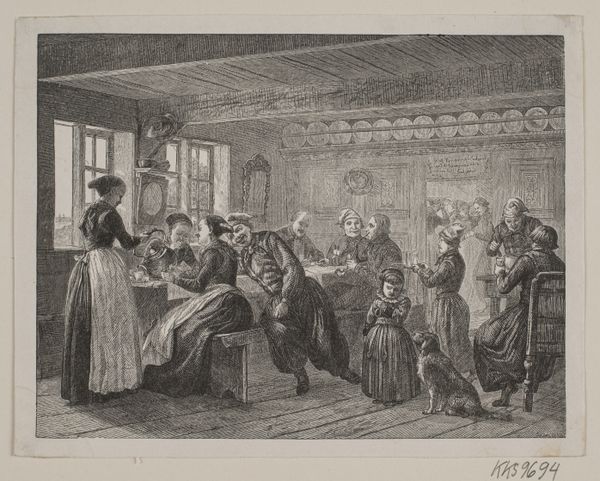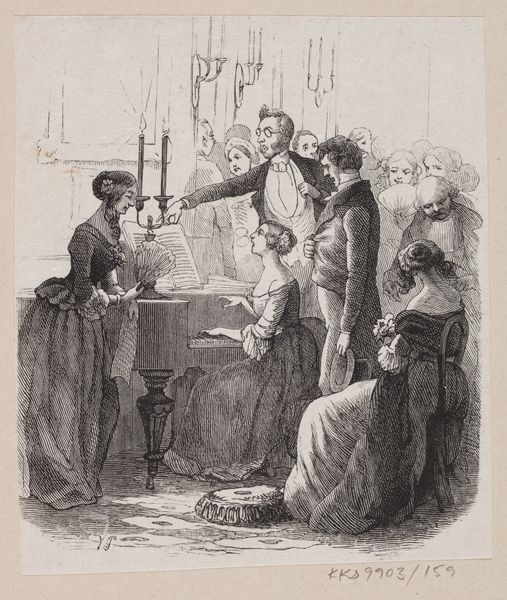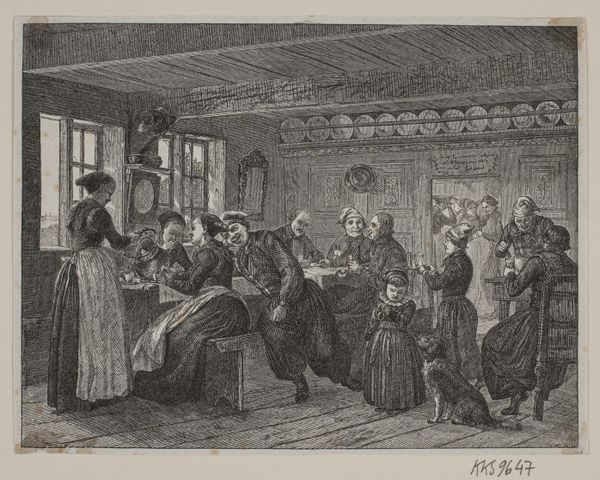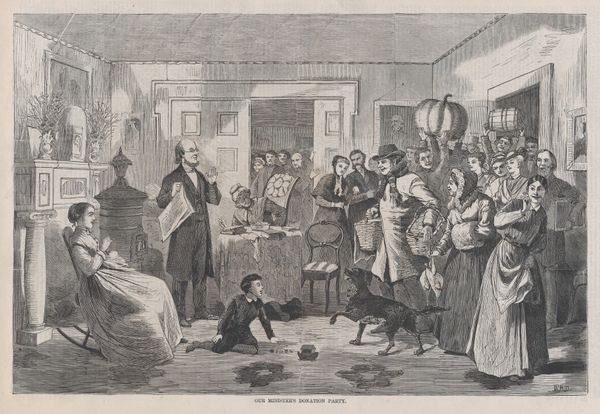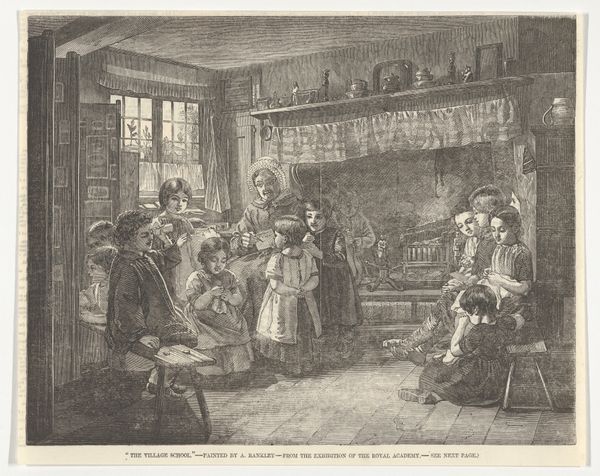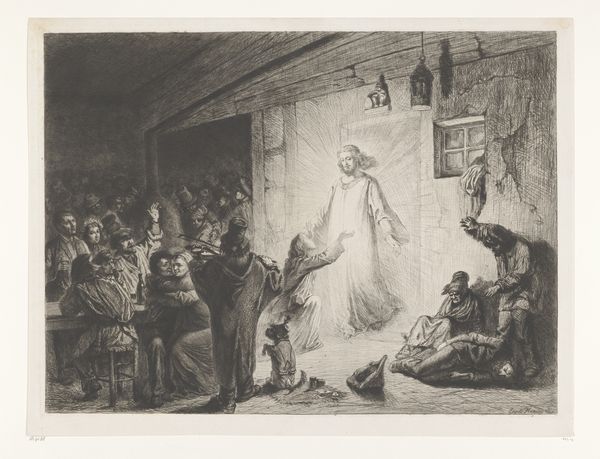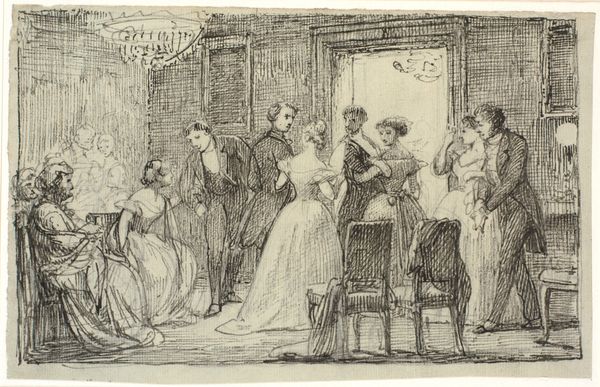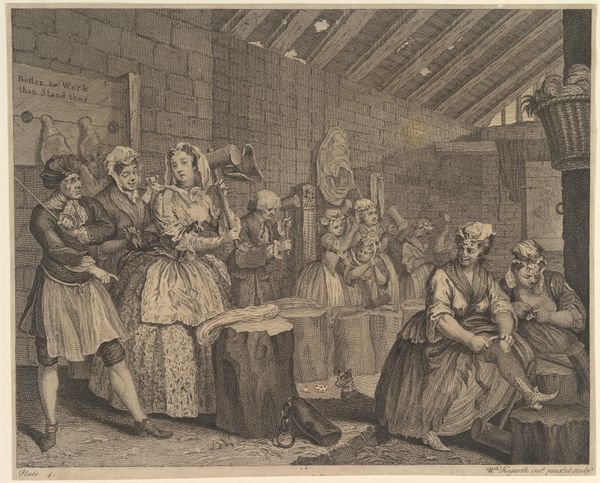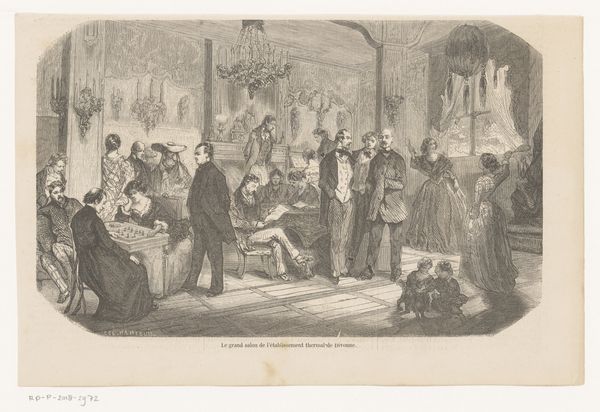
drawing, ink
#
drawing
#
ink
#
genre-painting
#
realism
Dimensions: 207 mm (height) x 311 mm (width) (bladmaal)
Editor: This is Wilhelm Marstrand’s "Dance in a Tavern," made between 1810 and 1873 using ink as the medium. It reminds me of a snapshot in time, like we’re catching a glimpse into a boisterous party. What do you see in this piece, that perhaps I am missing? Curator: I see more than just a party. Consider the socio-economic context. Tavern scenes, prevalent in 19th-century art, often depicted the lower classes, reflecting societal anxieties about morality and order. Note how the women are portrayed. Are they active participants, or passive objects of the male gaze? Editor: That's a great point, it does feel staged, in a way. I hadn’t really considered the setting beyond face value, but seeing it as a commentary on class and gender dynamics changes everything. Do you think Marstrand was critical of these social structures? Curator: Precisely! Look at the composition. The dancing figures dominate the center, but are surrounded by onlookers – predominantly men. Consider the power dynamics implied. Whose perspective are we invited to share? Is Marstrand endorsing or critiquing this social hierarchy? Think about the historical backdrop: were there nascent feminist movements that might have influenced Marstrand’s visual choices? Editor: That really does encourage a deeper look. The artist might be prompting the viewer to analyze social behaviour through what could at first glance seem like just a lively scene. Curator: Exactly. These scenes are never 'just' anything. Reflecting on the history provides a lens through which the present and future can be more clearly considered. This close looking at a drawing provides opportunity to assess visual codes embedded in artwork which reinforce power. Editor: Thanks, that opens up a much more critical and engaged way of interpreting this genre piece! I can see there is more to uncover when considering social undertones and historical framework.
Comments
No comments
Be the first to comment and join the conversation on the ultimate creative platform.
